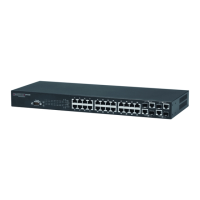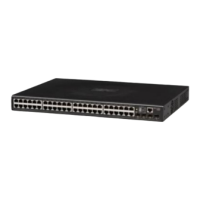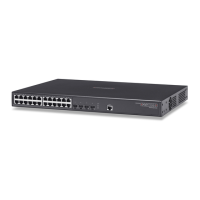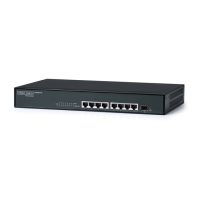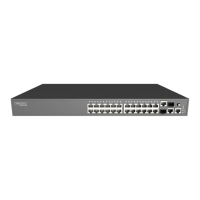– 737 –
30 RATE LIMIT COMMANDS
This function allows the network manager to control the maximum rate for
traffic transmitted or received on an interface. Rate limiting is configured
on interfaces at the edge of a network to limit traffic into or out of the
network. Packets that exceed the acceptable amount of traffic are dropped.
Rate limiting can be applied to individual ports. When an interface is
configured with this feature, the traffic rate will be monitored by the
hardware to verify conformity. Non-conforming traffic is dropped.
rate-limit This command defines the rate limit for a specific interface. Use this
command without specifying a rate to restore the default rate. Use the no
form to restore the default status of disabled.
SYNTAX
rate-limit {input | output} [rate]
no rate-limit {input | output}
input – Input rate for specified interface
output – Output rate for specified interface
rate – Maximum value in Kbps.
(Range: 64-100000 Kbps for Fast Ethernet ports,
64-1000000 Kbps for Gigabit Ethernet ports)
DEFAULT SETTING
Disabled
COMMAND MODE
Interface Configuration (Ethernet)
COMMAND USAGE
Using both rate limiting and storm control on the same interface may lead
to unexpected results. For example, suppose broadcast storm control is set
to 500 Kbps by the command “switchport broadcast packet-rate 500,” and
the rate limit is set to 20000 Kbps by the command “rate-limit input 20000"
on a Fast Ethernet port. Since 20000 Kbps is 1/5 of line speed (100 Mbps),
the received rate will actually be 100 Kbps, or 1/5 of the 500 Kbps limit set
Table 96: Rate Limit Commands
Command Function Mode
rate-limit Configures the maximum input or output rate
for an interface
IC

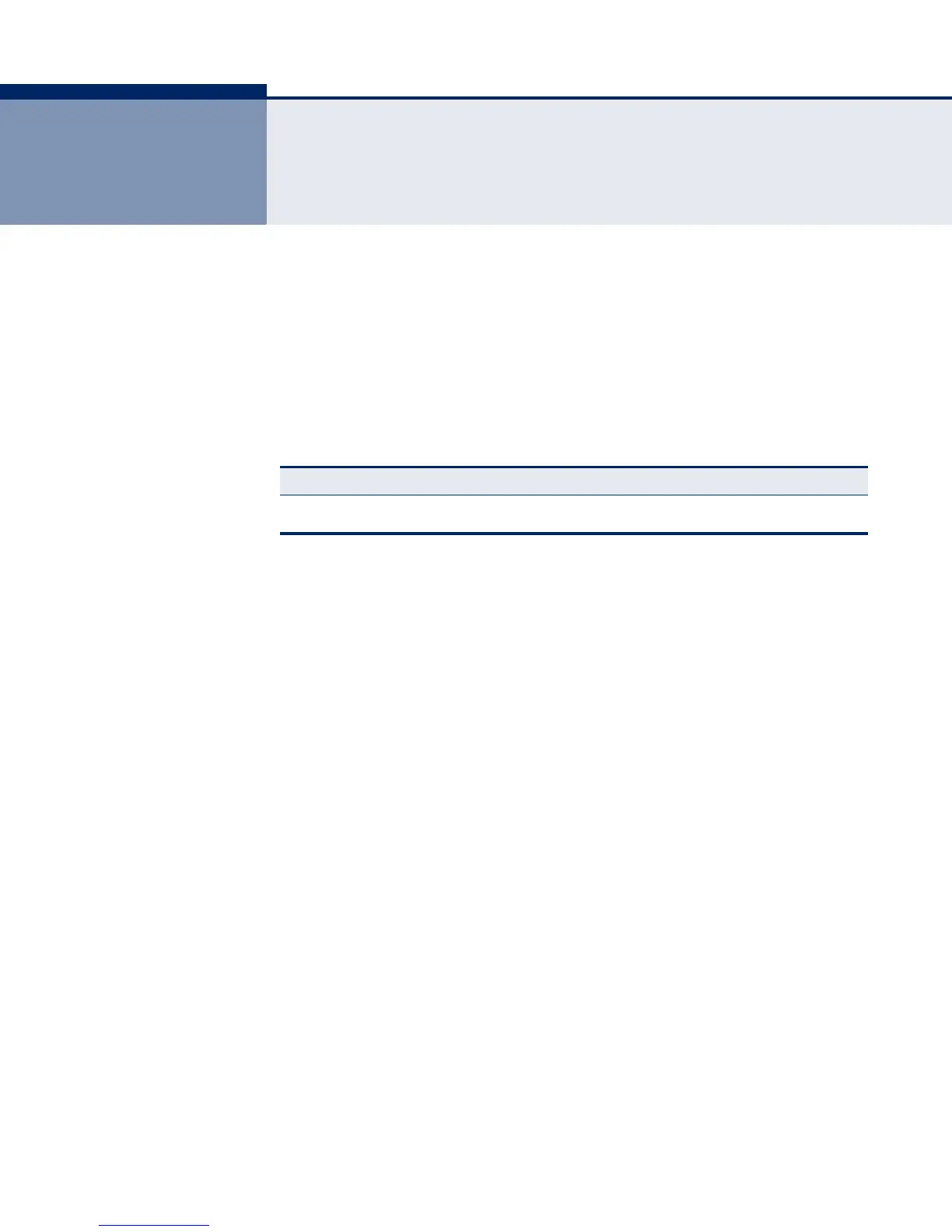